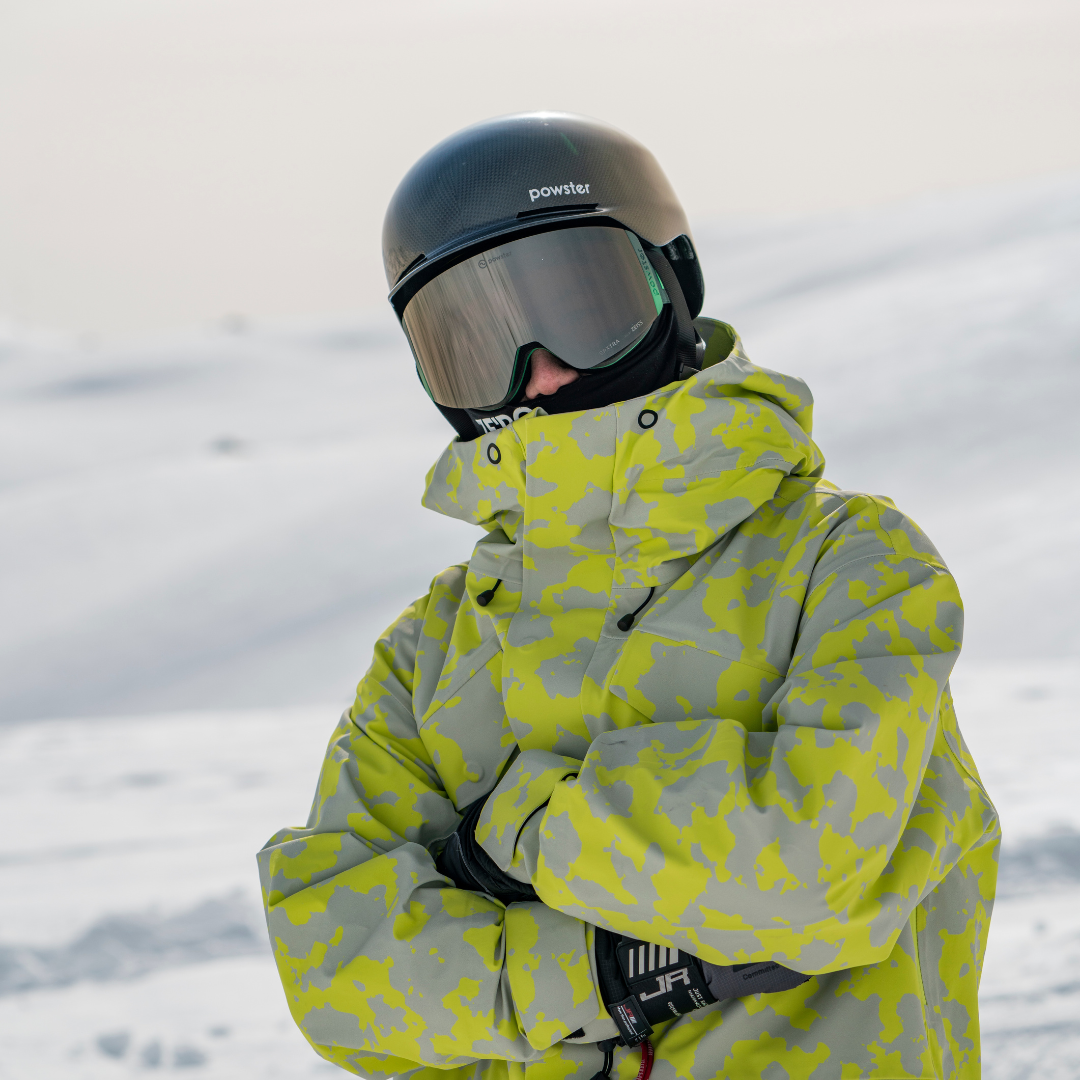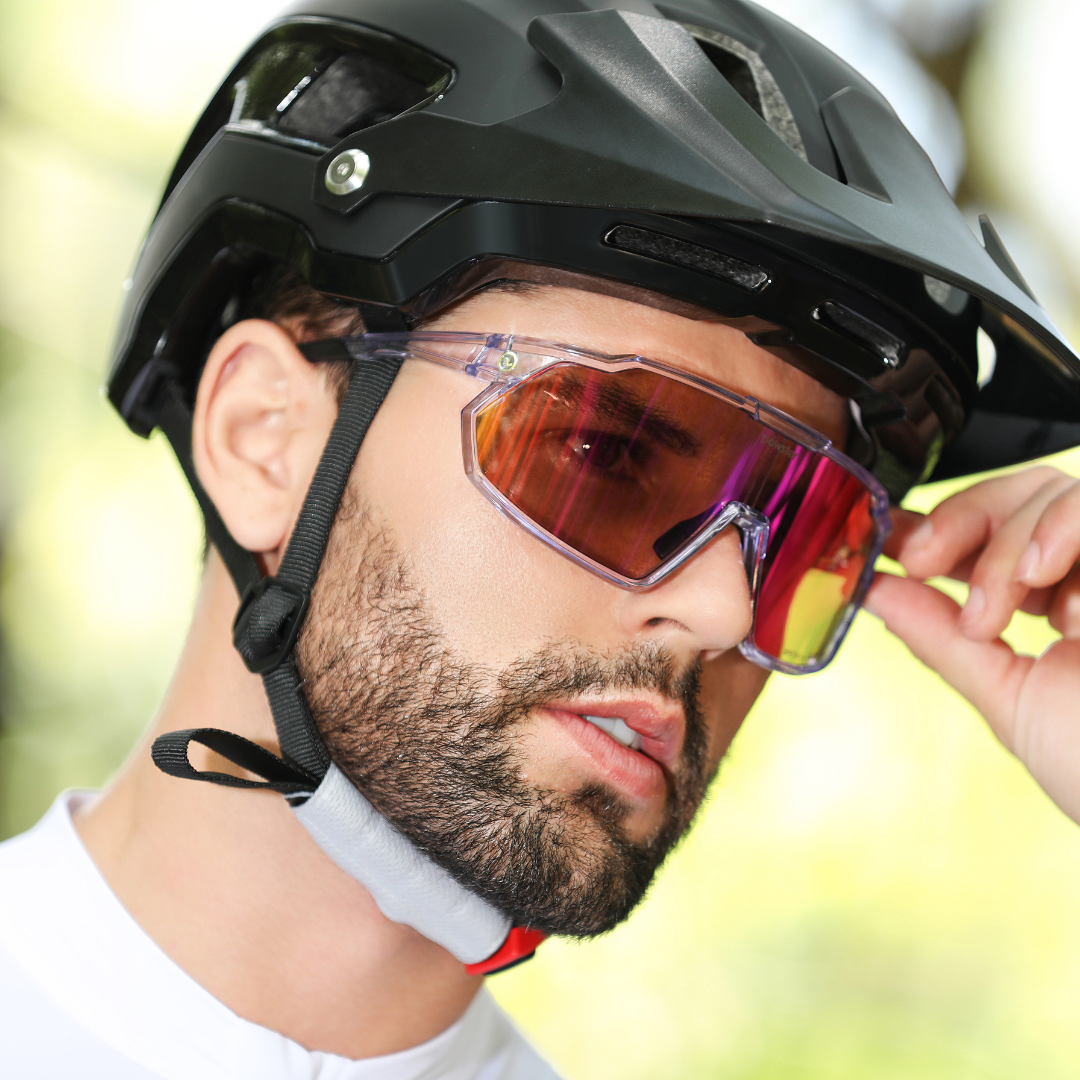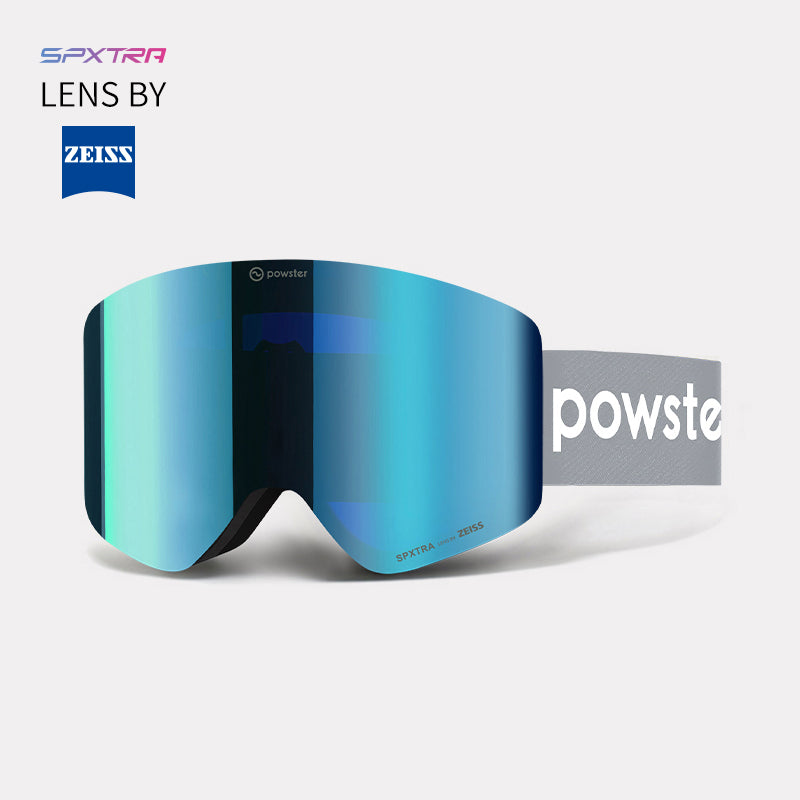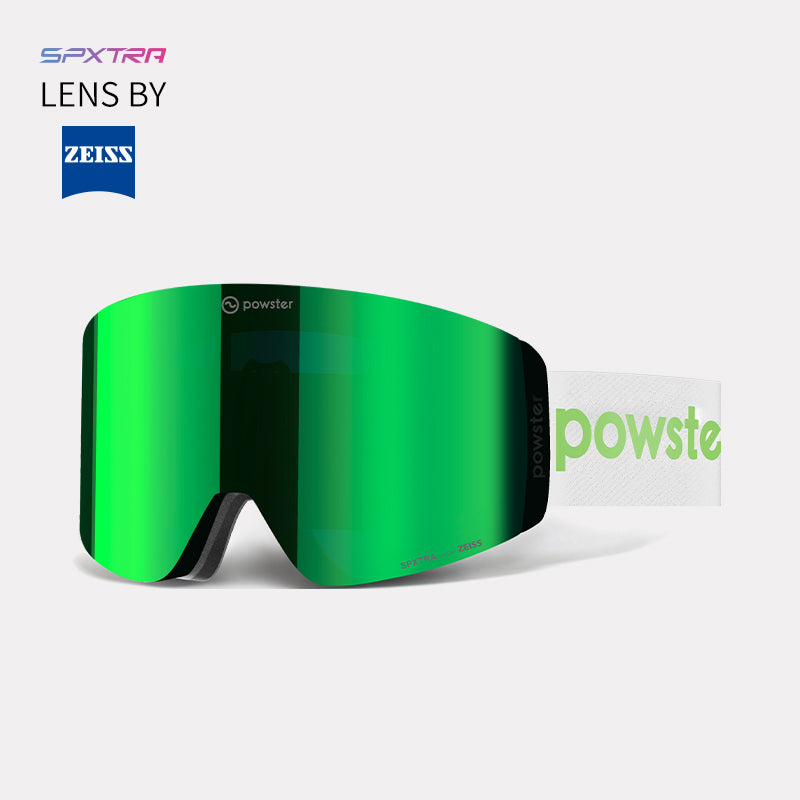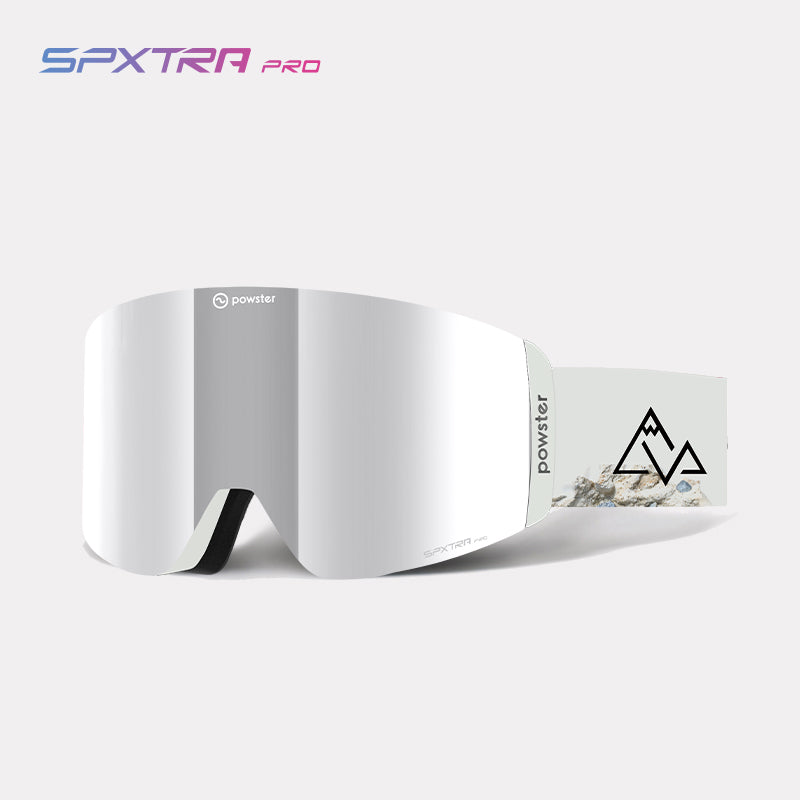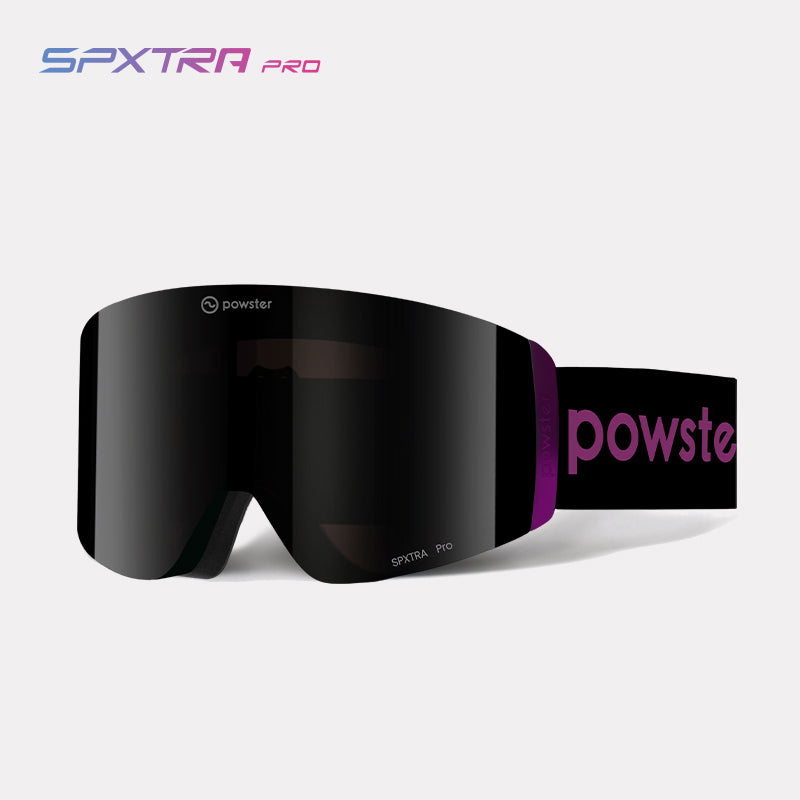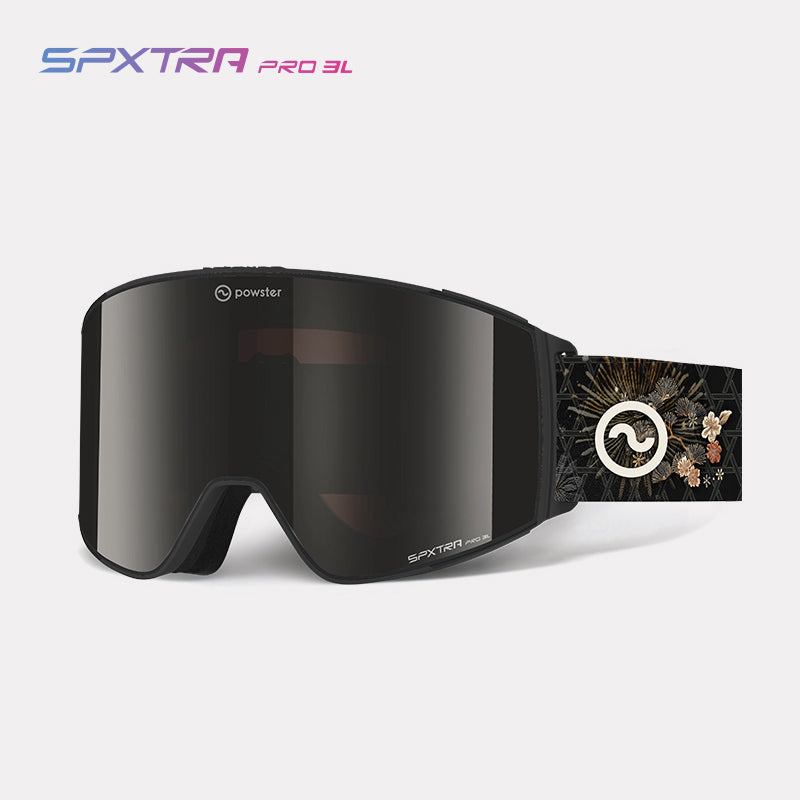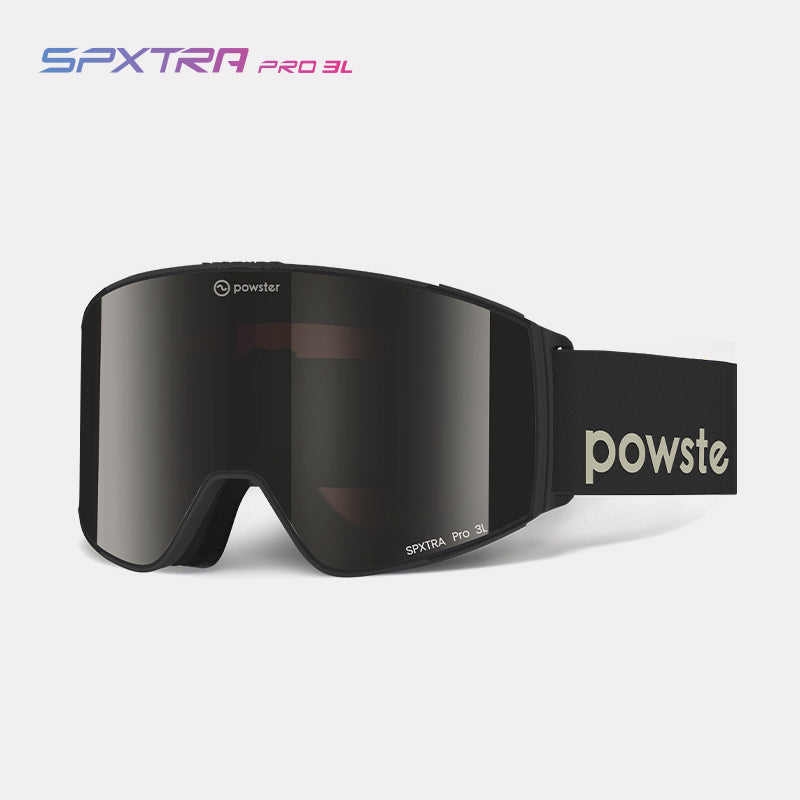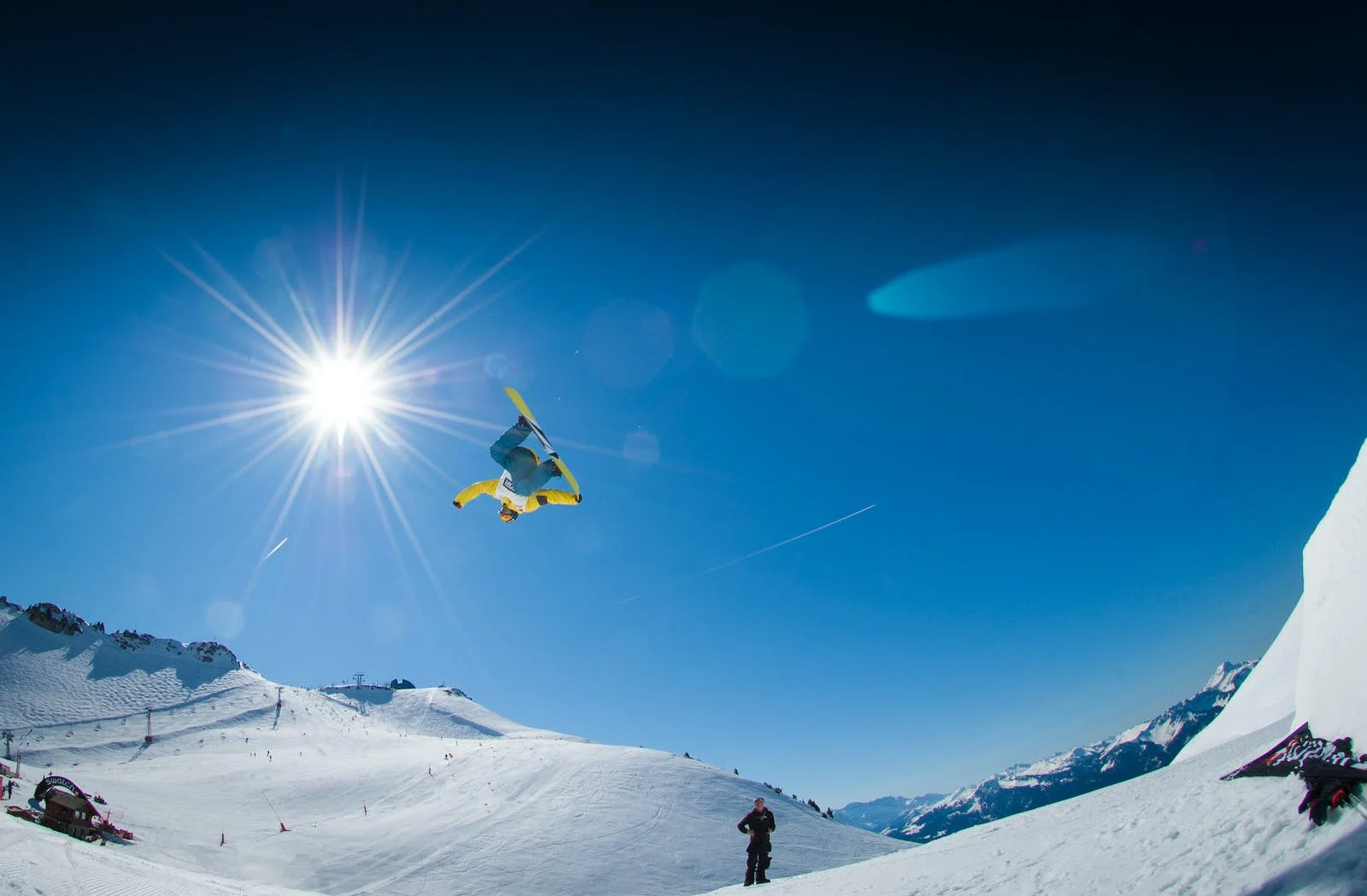No matter how hard you train for ski season, how much experience you have or how fearless you are, when skiing or snowboarding in overcast conditions, it doesn’t matter if you’re the best of the best when it comes to this adventure sport – seeing in cloudy, low light conditions is always going to be a mission. But just like all thrill seekers, we like to find ways around the impossible, and creating skiing and snowboarding gear that defies limits is just part of who we are. We have the solution to tackling low light weather, one that looks a lot like some pretty impressive goggle lens technology. And in this article, we’re here to tell you all about what ski goggles are best for overcast conditions.
We’ll also introduce you to some of our most popular ski goggles for overcast conditions here at Powster, like the Asteroid Bonus Zeiss Lens Snowboarding Goggles, which come with two rimless SPXTRA™ lens in collaboration with ZEISS and two goggle cases, easily interchangeable via a magnetic quick-change system delivering top performance under all mountain conditions.
What Is Flat Light Skiing?

If you’ve skied or snowboarded before, you will have experienced that piercing feeling of the light bouncing off fresh white snow and hitting your eyes like nothing brighter. We must admit, it’s not pleasant. You can’t see where you’re going, you find yourself violently squinting trying to see what lies ahead, and it can be incredibly disorientating to say the least. If you’re new to the sport, it’s bound to be even more of a shock. But the good news is, it doesn’t mean you have to miss out on a full day or 10 shredding some of the best mountains in the world.
It’s nothing new that flat light can be a real pain to navigate if you’re not equipped with the right gear to manage it. And when we talk about flat light, we’re talking about those days when the weather is super overcast, grey, cloudy and all round a bit dull. But while those days might not be the best if you’re planning on lounging on a beach in the Bahamas, they’re actually pretty ideal when it comes to skiing and snowboarding weather conditions. It’s the beauty of the sport, you can enjoy the slopes almost no matter what the weather brings.
All you have to do is have the right gear, and when it comes to flat light, ski goggles with the right coloured lenses are a godsend. Like our Pulsar Bonus Lens Green Lens Ski Goggles Zeiss SPXTRA™ Lens, which come with a silver lens for bluebird days, but also with an extra interchangeable lens that has hues of pink, yellow, purple and green – perfect for flat light conditions.
Flat Light Variable Light Transmission (VLT) Goggles

Now we’re going to get a little technical, but don’t stop reading, we’ll make it as simple as possible to understand! When you go to purchase goggles for cloudy conditions, you’ll likely run into a rating system called VLT, an abbreviation of Visible Light Transmission. This system is representative of the amount of light that passes through your goggles lenses and connects with your eyes. The purpose of flat light or low light lenses is to control the amount of VLT you’re exposed to to protect your eyes and improve your vision, like the Twilight Extra Wide Field Best Ski Goggles in the colour gold.
We highly recommend looking out for the VLT rating of ski goggle products to determine whether or not they’re going to be the right match for the activity you're doing, and the type of conditions you’ll be in. Basically, the higher the VLT percentage the more light is going to be let through your lenses and into your eyes. So this means you’ll be wanting to go for a VLT rating that’s higher for cloudier days so you can see better.
Another way of judging how strong a lens is is by following the categories system. This system is described using either a rating of Cat 4 - Cat 0, with “Cat” standing for categories, or S4 - S0, with the ‘S’ standing for the word snow. This system works in the opposite way to the VLT rating system – the lower the number, the more light that will be getting into your eyes. So say for example you’re looking for a pair of goggles for low light conditions, you want to go for a Cat rating around Cat 0-Cat 2 or S0-S1 to ensure that you’re getting enough light exposure in order to see clearly.
Best Snow Goggle Lens Colours for Low Light Conditions

Whether you’ve watched it on TV, seen it first hand or got some of it yourself, you’ll no doubt have seen the types of gear that comes with skiing and snowboarding. One of the most standout items is the goggles, and not just because they’re big and bold, but because they come in an array of different lens colours.
While it may seem that this is just a fashion statement, there’s actually a science to the different types of goggle lens colours – and a lot of it has to do with the climate you’re riding in. There are a whole host of colours to choose from, but let’s focus on the colours that are designed specifically for those cloudier, more overcast days.
Green Lenses

One of the more versatile lens colours, green lenses are actually great for both flat light conditions and those days when the sun is a little more intense and you're needing less light entering your goggles. Great if you don’t want to have to keep changing between lenses, green-tinted ski goggles, like our Supernova Balanced™ Toric Lens Best Ski Goggles, are a safe option.
Rose and Pink Lenses

Not only are they one of the more aesthetically pleasing options in terms of coloured lenses, but rose and pink coloured lenses are actually super effective at reducing blue light rays and increasing contrast in low light conditions, as well as improving depth perception. Try our Pulsar Leon Vockensperger Special Editions Bonus Zeiss Lens Silver Lens Ski Goggles in pink for this effect.
Amber Lenses

The main benefit of amber-coloured lenses is that they enhance contrast and depth perception to make everything seem a little brighter and a whole lot sharper. Because of this, they’re ideal for sports like skiing and snowboarding, as well as biking and hiking.
Yellow and Gold Lenses
Much like amber lenses, yellow and gold lenses work to improve contrast and depth perception, but specifically in low-light conditions like cloudy or foggy weather. A view brightener, they’re ideal if you’re not expecting to be taking on an absolute bluebird of a day.
Single Lens Versus Interchangeable Lens

One thing we can never truly prepare for on a ski or snowboarding trip is how the weather is going to pan out. Even if we’re constantly checking the forecast for updates, things can change drastically in a matter of minutes, so it can become tricky to preempt what kind of climate you might be going into when heading out for a day on the mountain. This is exactly why, for many, having the ability to change between goggle lenses is such a plus. Many brands, like us here at Powster, have specifically designed some of the best interchangeable goggle lens products for skiing and snowboarding so you can be prepared for anything. Take our Zenith Bonus Lens Best Ski Goggles Case Zeiss SPXTRA™ Pro 3L Lens for example – you’ll be more prepared than ever with two lens options to choose from.

When it comes to comparing the pros and cons of a single lens as opposed to an interchangeable lens, a lot of it does come down to personal preference. With a pair of single-lens goggles, the upside is that you don’t have to worry about carrying around any additional weight, but it also means that if you’re prone to losing things, you’ve got yourself covered.
If it’s rain, hail or shine, Powster has you covered for all types of goggle lenses, especially when it comes to what ski goggles are best for overcast conditions. Now that you’ve got your head around the concept of flat light, most commonly known as overcast and cloudy conditions, how it affects your skiing performance, and the types of ski goggles that are most suitable for those gloomier days, you’re armed with everything you need to know to make a conscious decision when purchasing your next pair of ski or snowboarding goggles.
Remember to consider a product's VLT rating, prioritise green, amber, pink and yellow coloured lenses for those grey days, and most of importantly – enjoy every minute of shredding knowing you have the best ski gear for the climate you’re in.





















